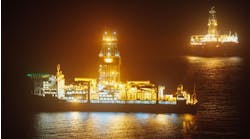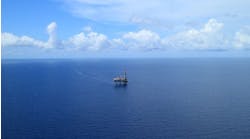Jeremy Beckman
Editor, Europe
Last month, GDF Suez joined the ranks of major operators on the Norwegian shelf when first oil flowed through the Gjøa field platform. The company took on management of production after Statoil had completed the development phase, in line with an agreement signed by the partners in 2004.
Gjøa is named after the first vessel to cross the Northwest Passage in 1906, following a three-year journey headed by explorer Roald Amundsen. Although the Gjøa field is more easily accessible, the development has established a new production outpost in the northernmost part of the North Sea, 45 km (28 mi) west of the mouth of Sognefjord in Floro County. It should also serve as a future hub for various “stranded” oil and gas accumulations in the area, and could therefore remain in business for the next 30 years.
The surrounding production license, PL 153, was awarded to Norsk Hydro (later merged with Statoil) in 1988, and comprises blocks 35/9 and 36/7. The Gjøa 35/9-1E discovery well followed a year later, and Hydro found three smaller accumulations in the license in the late 1990s. But development planning did not start in earnest until the earlier part of this decade.
Gjøa is a mid-size field with recoverable reserves estimated at 82 MMbbl of oil and condensate and 40 bcm (1.4 tcf) of gas. Concurrently, Statoil has developed the satellite Vega field in two separate licenses, holding an estimated 26 MMbbl of condensate and 1.8 bcm (63.56 bcf) of gas. The combined project, incurring investments of around NOK 40 billion ($6.6 billion), is the company’s largest-scale new development since Snøhvit in the Barents Sea.
By mid-2011, Gjøa should be producing at a peak rate of 18,000 MMcmoe/d, a level which should be sustained through 2018. However, despite its resources, this was considered a marginal project for some time before Norway’s parliament sanctioned development in June 2007. The reserves, contained in Jurassic sandstones, are difficult to access – the oil column is thin, with vertical thickness varying between 30-45 m (98-147 ft) inside the reservoirs. The gas is above the oil in a cap up to 300 m (984 ft) thick; beneath the oil, formation water makes drilling complex and costly.
Platform scope
Statoil and partners GDF Suez, RWE Dea, SDFI/Petoro, and Shell opted for a newbuild semisubmersible as the central production system. The NOK 8-billion ($1.3-billion) engineering, procurement, and construction (EPC) contract was awarded in late 2006 to Aker Solutions, and covered detailed design for the topsides and hull, topsides construction, and topsides/hull mating.
At peak, 100 engineers were involved in this program in Oslo, Norway, supported by Aker Solutions staff in Mumbai, India. The finished design comprised a 110 x 85-m (361 x 279-ft) deck supporting a 20,000-metric ton (22,046-ton) topsides and a 67.5 x 17.8-m (221 x 58.4-ft), 14,300-metric ton (15,763-ton), hull (dry weight), featuring a ring pontoon and four square columns with bilge radii. The platform’s total displacement is 59,000 metric tons (65,036 tons).
Construction of the hull ($150 million) was awarded to Samsung in South Korea, with Aker Stord in Norway responsible for the topsides construction, the latter operation employing 3,000 personnel at peak. Aker Solutions’ yards in Egersund and Verdal also chipped in, fabricating respectively a riser module and the flare tower. One of the first of the main topsides items to be delivered, in May 2009, was the 1,500-metric ton (1,653-ton), 100-bed aluminum living quarters, helideck, and lifeboat station module, built by Applied Leirvik. Other topsides contracts included the platform control system (Kongsberg Maritime), and compression equipment and drivers, supplied by Dresser Rand.
The completed hull structure was transported onboard Dockwise’sMighty Servant, passing through the Gulf of Aden under the protection of an EU naval force before arriving at Stord in October 2009. Early this year, following completion of the topsides, mating operations were performed in the fjord outside the yard. The platform was due to be towed to its offshore location in April, but sea trials revealed the need for localized strengthening of the hull, necessitating a return to Stord. The platform eventually was towed out to the field in June by Aker Marine Contractors, with Aker Kvaerner Pusnes supplying the winches and fairleads for the 16-point mooring system. Other subcontractors included Luster Mekaniske Industri in Norway; STX Europe in Zwezdochka, Russia; and Polish companies Promorze, Energomontaz, Morska, and Energop.
In January, the semisubmersible rigTransocean Searcher began its three-year, $427-million drilling contract. Gjøa is being developed via simple pressure depletion (no water or gas injection). The initial program calls for up to 13 subsea production wells, nine for oil and four for gas, and each incorporating subsea multiphase meters provided by Framo. Eight of the wells will be connected on two subsea templates at the Gjøa South location, three on one template at Gjøa East, and one at Gjøa North.
The templates, featuring integrated protection covers, weigh 275 metric tons (303 tons) each and their associated manifolds 103 metric tons (113 tons). All were fabricated by Grenland Group in Norway under a subcontract from FMC, which has also supplied a total of 14 subsea trees for the development. Some of the subsea structures were installed during fall 2008 by theSkandi Energy, with the remainder put in this August by Technip’s new subsea construction vessel Skandi Arctic.
Gjøa’s various drilling centers have been tied back to the platform by 10-in. (25.4-cm) and 12-in. (30.5-cm) flowlines, with lift gas injected through 6-in. (15-cm) lines. Technip’s reelshipApache performed the installations in spring 2009, with the Acergy Eagle a few months later installing the steel tube umbilicals manufactured by Aker Kvaerner Subsea in Moss, Norway. NKT supplied the flexible risers.
Export routes
In October 2007, Britain’s government approved the UK section of Gjøa’s proposed 130-km (80.8-mi), 28-in. (71-cm) rich gas export line, designed to tie into the FLAGS trunkline at a point just south of the Brent field complex. Japan’s Metal One provided the carbon steel pipes for this line, while Mitsui and Nippon Steel supplied carbon steel pipes for the 53-km (32.9-mi), 15-in. (38-cm) stabilized oil export line which links into the TOR2 pipeline system between the Troll C platform and the Mongstad crude oil terminal. Saipem’sCastoro 6 installed the two new pipelines, both concrete coated by Bredero Shaw, in summer 2009. Gassco became operator of the Gjøa gas line, which was fully operational this summer.
After Troll A, Gjøa is the second platform in the North Sea to be powered directly from shore, featuring what is claimed to be the world’s longest alternating current (AC) cable from land to a floating installation. The nearly 98.5-km (61.2-mi) long cable, designed and manufactured by ABB Power Technologies, is intended to cut Gjøa’s carbon dioxide emissions at peak production by 210,000 mt/yr (231,485 t/yr), and to limit emissions of nitrogen oxides and volatile organic compounds. It should also reduce fuel consumption and noise levels offshore.
For ABB, the main design considerations of this NOK 500-million ($82-million) contract included anticipating stresses that might be imposed on the subsea power connections. The completed system, laid early this year by the Global MS construction vesselNorth Ocean 102, includes a static AC cable supplying 40 MW at 80 kV from mainland Norway, in water depths of up to 380 m (1,247 ft). A 1.5-km (0.9-mi) dynamic cable, weighing around 130 metric tons (143 tons), connects the static cable on the seabed to the platform. Power, which was turned on this July, is supplied from a new combined heating and power station at Mongstad that started operating earlier this year.
The dynamic cable, suspended in water, is subject to mechanical stress and fatigue from wind and waves, which can move the platform up to 75 m (246 ft) in any direction. To withstand these conditions, ABB developed an alternate to the standard lead sheath protection solution, which should ensure an operating life of at least 35 years.
ABB, working with Statoil, also supplied high-voltage electrical equipment for transformers and engine drives onboard the platform. According to field analysts ScanBoss, a hybrid power solution has been implemented under which gas turbines are used to power the gas export compressors, with 40 MW of AC power imported from the shore for other tasks.
Vega tiebacks
Vega, due onstream shortly, comprises the Vega North, Vega Central, and Vega South accumulations, formerly known as Camilla, Belinda, and Fram B. They were discovered by Gulf Exploration and Mobil in the 1980s, and are divided between the PL 248 and PL 090C licenses. Vega North is 80 km (49.7 mi) west of Floro in block 35/8, with Vega Central 10 km (6.2 mi) to the south and Vega Central a further 10 km to the south in block 35/11. At peak, they should deliver 7 MMcm/d (247 MMcf/d) of gas and 25,000 b/d of condensate, with production continuing for 12 years.
Statoil is developing these structures with six wells gathered together via three 500-metric ton (551-ton), four-slot template-manifolds, again supplied by FMC/Grenland Group and installed by Heerema’s crane bargeThialf in May 2009. The semisubmersible Bideford Dolphin started drilling the wells three months later.
The collective well stream will head to the Gjøa platform for processing via 12-in. (30.5-cm) flowlines connected to a new 32-km (19.9-mi), 14-in. (35.6-cm) pipeline, starting at Vega South, which was laid in April last year by theSkandi Navica. This carbon steel line is insulated by a Thermotite coating applied by Bredero Shaw. According to ScanBoss, the pipeline will be injected with MEG and corrosion inhibitor. The Seven Seas vessel laid the 3-in. (7.6-cm) MEG line and associated umbilical (the latter again supplied by Aker Kvaerner Subsea) in mid-2009.
The partners in the Vega field are Petoro, in PL 090C, and Bayern Gas, GDF Suez and Idemitsu for PL 248.
As the new operator of the Gjøa complex, GDF Suez had to apply for consent from Petroleum Safety Authority Norway to continue the program. Five wells were due onstream at start-up, with six more due to be completed by July.
Over 60 GDF Suez employees were integrated into Statoil’s project team during the development phase, providing input into the design, and developing procedures and IT applications for the production operations phase. A Statoil team was due to stay on to assist GDF Suez during the transition period.
The new operator has appointed IKM as its operations support contractor, with production and other platform activities conducted by integrated operations involving onshore teams at Forus and at the logistics and supply base in Floro working with the organization offshore. Meling & Co is providing its new platform supply vesselSiddis Supplier under an eight-year contract, and CHC Norway is responsible for helicopter transport.
GDF Suez and its partners aim to extract over 70% of the Gjøa and Vega fields’ gas and just over 20% of their oil. Future tie-in candidates could include Statoil’s nearby Astero and Peon discoveries, and Wintershall’s Grosbeak.
Offshore Articles Archives
View Oil and Gas Articles on PennEnergy.com






